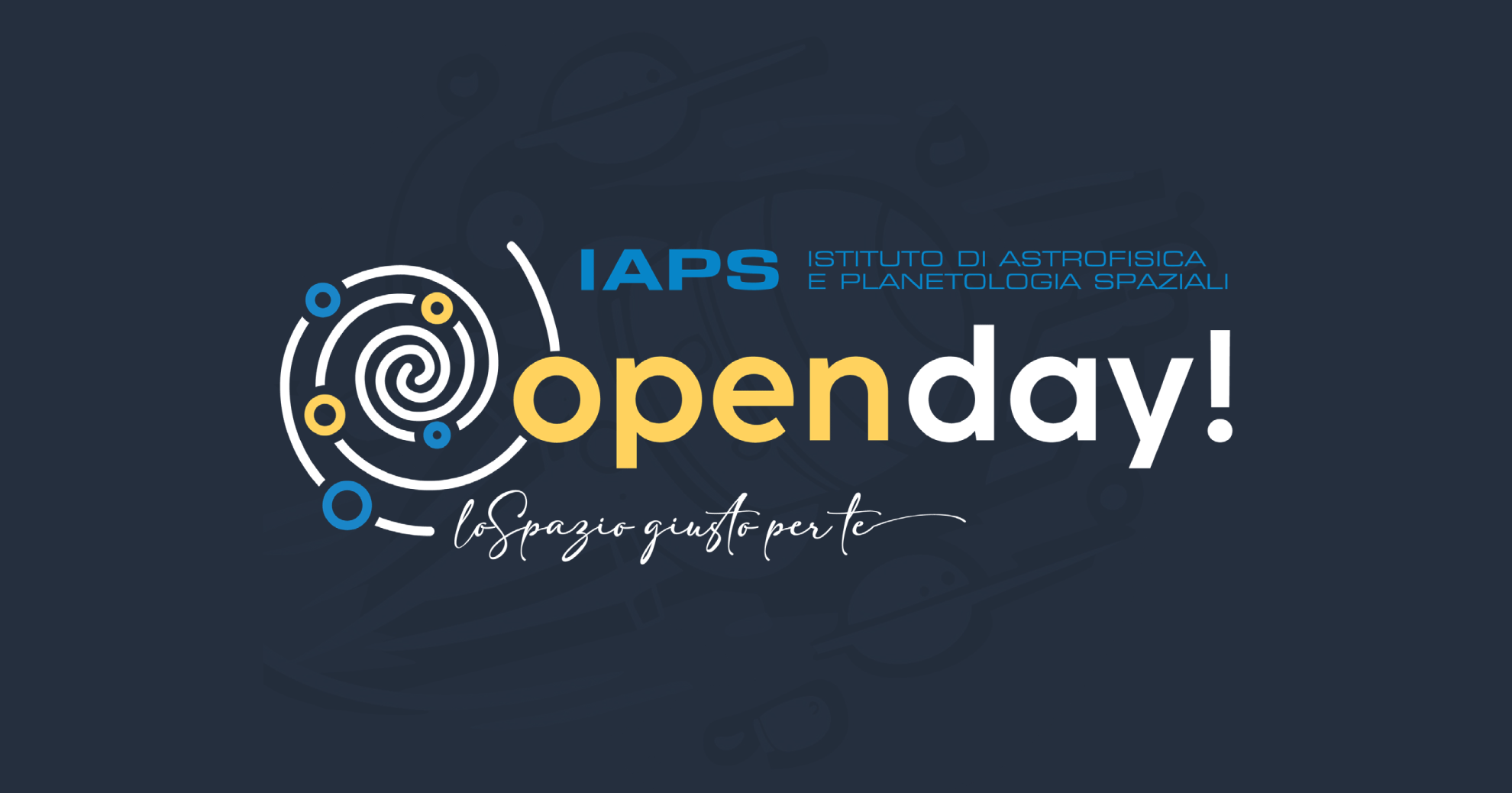
21 and 22 March
IAPS-INAF opens its doors wide to show its activities to you young university students and introduce you to the possibilities of study and work within the institute. Tours of our laboratories, presentations of scientific activities , illustrations of major Italian and international projects: all guided by our researchers who will be on hand to answer your doubts, questions and curiosities, giving you a concrete vision of the possibilities for study and research within our projects.
The two morning (h 10 - 13.30) and afternoon (h 14.30 - 18) sessions will open with a speech by IAPS Director Marco Feroci and a short presentation of the activities, lasting a total of about thirty minutes.
Below is a description of the InfoPoint and Laboratories that we have planned for you and that you will find on the two days. Don't forget to bring an ID with you to be identified at the entrance.
RESERVATIONS ARE CLOSED
You can access the Info Points without a reservation and you can book on site at the workshops subject to availability
Info Point
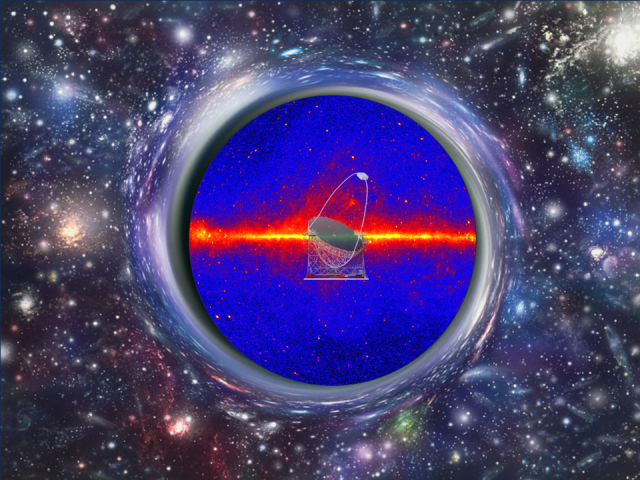
Galactic Gamma-Ray Busters: particle acceleration and Cherenkov Telescopes
Astrophysics has a superpower: it allows us to see what remains invisible to our eyes. Gamma radiation is one example: it is the most energetic existing "light", emitted primarily by the extraordinary "reincarnations" of stars: from supernova remnants to pulsars to black holes.
This radiation is so energetic that we cannot focus it, and for this reason, we have had to create ingenious methods to capture and study it. We will journey among these extraordinary objects, immersing ourselves in the world of "gamma" astrophysics and the "superpowers" they harness to understand their most "explosive" secrets.
CONTACT: Martina Cardillo (martina.cardillo@inaf.it)

Gamma-Ray Bursts and Electromagnetic Counterparts of GW Events
Gamma-ray bursts are the most luminous explosions in the Universe that emit a prompt high-energy signal followed by a comparatively long-lived broadband afterglow. They are produced by the collision of compact objects or the collapse of a massive progenitor, with observable differences in their emission.
Our group studies all aspects of GRBs using multiwavelength modelling of the afterglow emission to understand the progenitor's properties and environment. Additionally, we use gravitational waves to analyze these events in a multimessenger approach for merger-driven GRBs.
CONTACT: Aishwarya Thakur (aishwarya.thakur@inaf.it)

Star and planetary formation
Stars and planets form inside giant molecular clouds rich in atomic and molecular gas, and cold dust, at a few tens of Kelvin. Gravity, turbulence, magnetic fields, and feedback processes shape the interstellar medium from the scale of the clouds (hundreds of parsecs) to the scale of protoplanetary disks (hundreds of astronomical units).
The Stars and Planets Formation Group has been studying the various phases of this process at different scales for over twenty years, thanks to large observational surveys in photometry and spectroscopy, which have made it a group of absolute excellence at international level, and in recent years also thanks to simulations of the chemistry of protoplanetary disks, with several ongoing projects in synergy with other European research institutes.
CONTACT: Chiara Mininni (chiara.mininni@inaf.it)
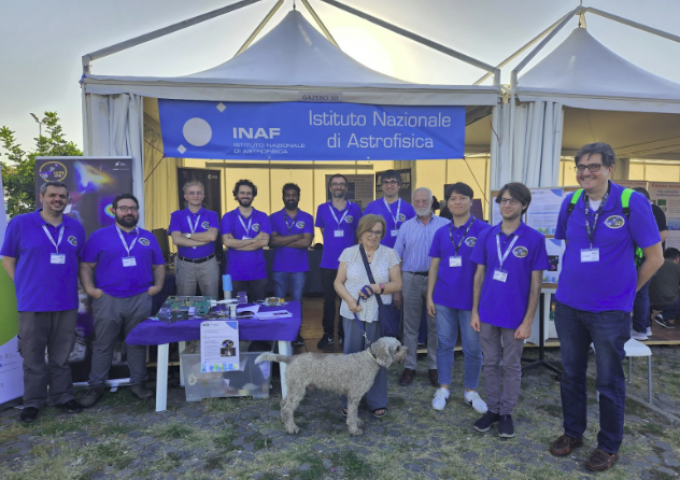
Development of X-ray polarimetry instrumentation and the Imaging X-ray Polarimetry Explorer (IXPE)
The NASA/ASI mission IXPE launched on 9th December 2021, was recently awarded the Bruno Rossi prize by the American Astronomical Society for the new discoveries obtained, thanks to the X-ray polarimetry, on black holes, neutron stars, supernovae remnants and galactic nuclei, studying their intense magnetic fields and their particle acceleration mechanisms.
Over the last 30 years, the IAPS team has tenaciously developed new detection techniques for X-ray polarimetry, which led to the creation of the instrument on board the IXPE. Today, we are working on the analysis of data from astrophysical sources and on the development of a new generation of X-ray polarimeters for future missions, which are receiving great renewed interest.
CONTACT: Alessandro Di Marco (alessandro.dimarco@inaf.it) and Fabio La Monaca (fabio.lamonaca@inaf.it)
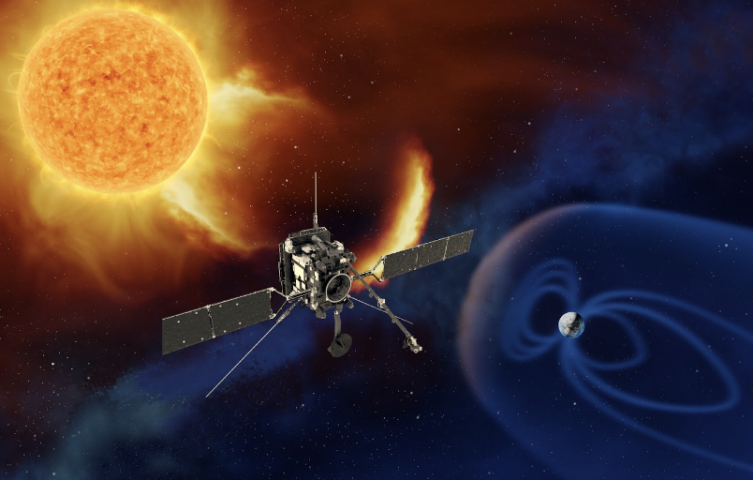
Heliospheric Plasma Physics
The stars, as well as the intergalactic, interstellar, and interplanetary space, are environments permeated by matter in the state of plasma: a globally neutral medium composed of ionised matter. The study of plasmas is crucial for understanding many astrophysical processes, from particle acceleration to dissipation in non-collisional media. In this context, the heliosphere represents a unique laboratory for space plasma investigation, being close to us and therefore accessible to direct measurements.
Our group investigates the properties of the plasma originated from the Sun and its impact on Earth and planetary environments. We have been involved for many years in the design and management of experiments on board space missions and in data analysis. The combination of theoretical models and space observations allows us to model the solar wind dynamics and its interaction with the Earth, thus evaluating the impact of solar disturbances on technological systems and human activities.
CONTACT: Simone Benella (simone.benella@inaf.it)
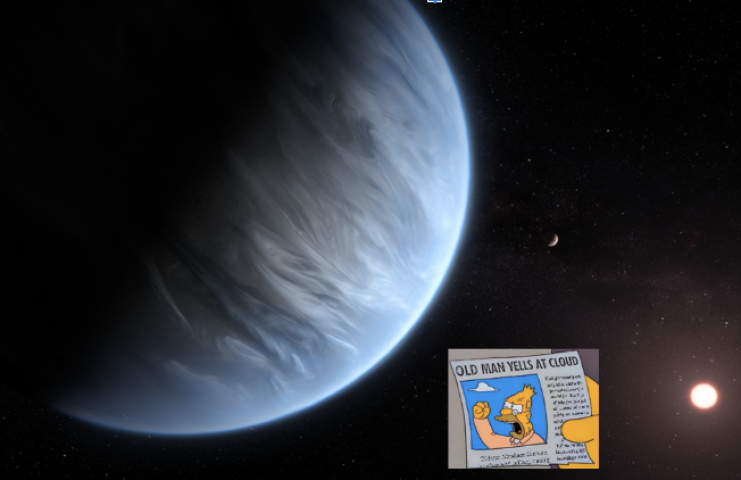
Planetary Atmospheres
Planetary atmospheres are a laboratory of inestimable value for the comprehension of how our Solar System, or the extrasolar ones, could evolve from a protoplanetary nebula to their current configuration. The atmosphere, acting as a sort of shield or thermal blanket for its own planet, is the scene of countless chemical reactions triggered by its interaction with the host star’s electromagnetic radiation. Dynamical events like winds, storms and hurricanes contribute in mixing the atmospheric composition by interacting with the planet’s interior (either a rocky surface or the gaseous envelop of a giant like Jupiter), hence defining what gases, particles or ices can be obsereved from space.
Here at IAPS we study the planetary atmospheres of both rocky planets, like those of Venus and Mars rich in carbon dioxide, and those of gaseous giants like Jupiter and Saturn, mostly made of molecular hydrogen and methane. Let’s analyze together the data from several space missions launched by the european and american space agencies (ESA and NASA), in view of future missions like JUICE, dedicated to the study of Jupiter and its icy satellites, or ARIEL, that instead will try to characterize the atmospheres of an ensemble of exoplanets.
CONTACT: Fabrizio Oliva (fabrizio.oliva@inaf.it)

Planetary Space Weather (PSW)
The Planetary Space Weather team in IAPS investigates the magnetospheres and exospheres of Solar System bodies, and their interactions with the Sun and the external environment (in terms of radiation, interplanetary magnetic fields and solar plasma). PSW is the application to other bodies of the Space Weather at the Earth, born as the investigation of Solar-Earth environment interactions, and their effects on technology and telecommunications.
The PSW studies at IAPS are performed through theoretical models and investigations as well as through data analysis coming from Earth-based telescopes and from satellites. The main involvement of the team is presently on the ESA/JAXA mission BepiColombo now flying to Mercury through the instrument suite SERENA, which of one of the 4 sensors (ELENA) was almost entirely designed and tested here in IAPS. SERENA will measure in-situ populations of neutral and ionized atoms at different energies, and will help to understand the dynamics of the environment of Mercury.
CONTACT: Valeria Mangano (valeria.mangano@inaf.it)
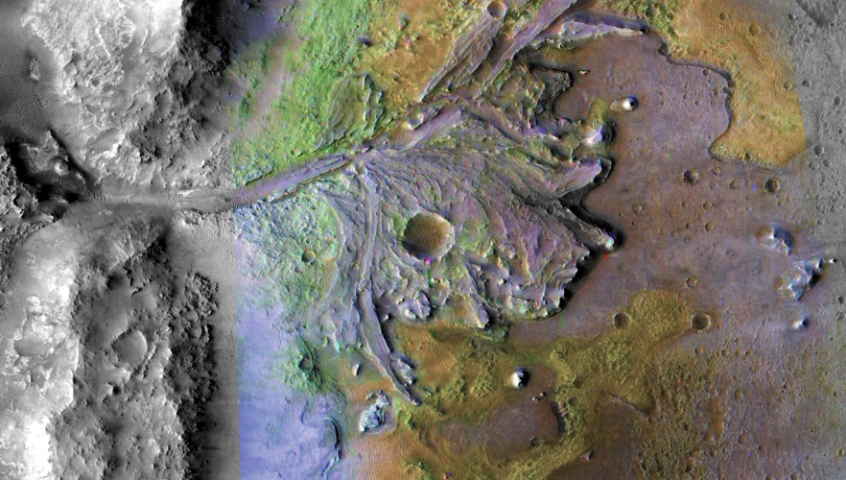
Planetary Spectroscopy
Surface spectroscopy is a fundamental investigative technique for the study of planetary surfaces. The sunlight that hits the surface of a planet is absorbed, reflected or emitted in different ways depending on the composition present. By analyzing the spectrum of this light, we can determine which elements or compounds are present. It is, therefore, a precious tool for exploring the mysteries of our solar system thanks to which it is possible to identify the minerals present on the surface of a planetary body.
On board space missions, such as DAWN and Mars Express, INAF installs instruments called spectrometers with which its researchers can investigate and study the minerals present in the soil and ultimately reconstruct the evolutionary history of distant worlds without ever leaving Earth.
CONTACT: Giacomo Carrozzo (giacomo.carrozzo@inaf.it) and Andrea Raponi (andrea.raponi@inaf.it)
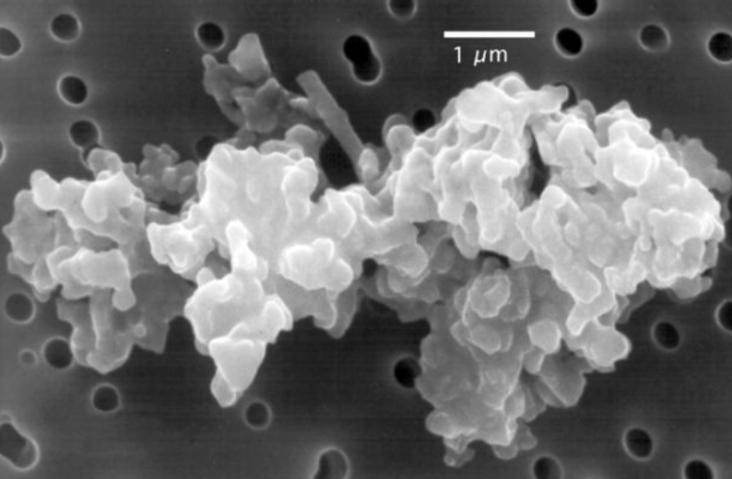
Planetary dust
Dust is the smallest Solar System building block and its study provides important insights about formation and evolution of planetary bodies (planets, asteroids, comets) it belongs to. Dust composition, studied by means of spectroscopic analysis, provides materials composing the studied body, that are linked to the source region of the planetary body and its following evolution. Physical properties (roughness, porosity) give indication of the body pristinity (i.e., if it is a primitive body or was subjected to processing). Photometry (i.e., interaction with radiation at different angles) gives us optical properties, also related to planetary body’s evolution.
This research group studies planetary dust and surface, by means of data provided by spacecrafts (cameras, spectrometers, dust detectors, microscopes) on different targets (in particular, asteroids and comets) and their comparison with laboratory measurements on meteorites and planetary analogs.
CONTACT: Andrea Longobardo (andrea.longobardo@inaf.it)
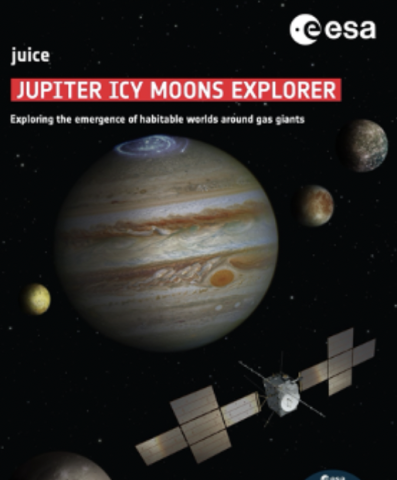
Jupiter Icy Moons Explorer (JUICE)
JUpiter ICy moons Explorer (JUICE) was selected in 2012 as the first Large-class mission within the “Cosmic Vision” programme of the European Space Agency (ESA). JUICE is the first European-led mission to explore the Jupiter system. It was successfully launched on April 14, 2023 and will arrive at Jupiter in July 2031.
JUICE will characterize conditions that may have led to the emergence of habitable environments on so-called “ocean worlds” such as the icy Galilean satellites Ganymede, Europa and Callisto. Ganymede was selected as JUICE's primary target because it is the largest satellite, is fully differentiated, and has a unique magnetic environment. For Europa the focus is on geology, surface composition and shallow subsurface structure. The study of the diversity of the satellite system, also important for shedding light on their origins, will be complemented by several flybys of Callisto and further information collected remotely on Io and other smaller targets. Frequent observations of Jupiter's atmosphere and magnetosphere, conducted over a few years, will further improve our understanding of the evolution and dynamics of the Jovian system.
The Italian contribution to JUICE is substantial. In particular, INAF leads the JANUS optical camera, co-leads the MAJIS imaging spectrometer, and is also involved in the RIME ice penetrating radar.
CONTACT: Federico Tosi (federico.tosi@inaf.it)

Planetary Geology
Research in Planetary Geology is anchored in the dialogue between Earth Sciences and Planetology. Also known as Astrogeology, it originated in the 1960s along with lunar exploration. In fact, space exploration made it possible to apply geological investigation techniques already established on Earth to other solid (rocky or icy) bodies in the Solar System. Earth-based geological investigations can be used to decipher the current and past environments of other planets, just as extra-terrestrial landscapes and rocks can teach us much about Earth's distant past.
The many geological techniques that can be applied to the investigation of extra-terrestrial morphology, stratigraphy, tectonics, and volcanism range from planetary mapping, structural analysis, numerical modelling, investigations of analogue environments, to augmented reality. Such techniques not only enable the acquisition of valuable information on the evolution of the exposed surface, but also reconstruct the subsurface and internal structure of the bodies under investigation. Geological interpretation of remotely sensed planetary surfaces enables the planning and optimization of investigations of instruments aboard space missions. In conclusion, from its inception to the present, this discipline has allowed and will increasingly allow planetary bodies to be brought closer to humans, making them less distant.
CONTACT: Valentina Galluzzi (valentina.galluzzi@inaf.it)

Moon-related activities
In recent years, the interest in our Moon increased significantly, with the approval of a new NASA program for human lunar exploration, Artemis, as well as several successful Chinese robotic missions. The Moon race ultimately allowed the collection of a large amount of lunar rock samples and lunar regolith. Following a 20-years gap, from 1994 onwards, several space missions, first led by USA and later by Japan, India and China, drastically improved the knowledge of our natural satellite. For these reasons, the study of the lunar surface is fundamental.
Recently, thanks to various projects led by INAF and other institutions, in our group, made up of researchers and technologists expert in data analysis and laboratory activities, we undertake a detailed study of several regions of interest across the Moon. In particular, we study the morphological and mineralogical characteristics of the lunar surface through data acquired by cameras and imaging spectrometers. Furthermore, this work is supported by laboratory measurements of lunar meteorite samples and simulants, aimed at improving the understanding of the chemical and physical characteristics of the surface of our satellite.
CONTACT: Francesca Zamboni (francesca.zambon@inaf.it)
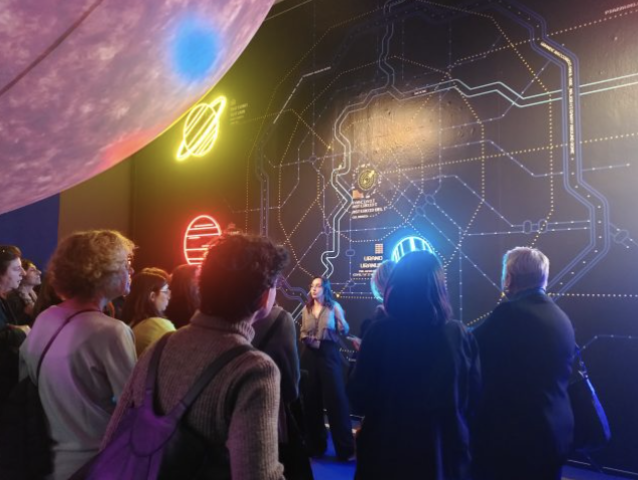
Education, outreach and communication activities of the COMET Office
IAPS’ COMET (External Communication) office deals with initiatives aimed at the media, schools and the general public, and is focused on disseminating the results and methods of scientific research and more generally, scientific culture. Among the last activities, we will present the exhibition "Time Machines" hosted at Palazzo Esposizioni, EduINAF, the online magazine dedicated to science education and outreach, the participation to the European Researchers' Night and the organization of the Italian Astronomy Championships.
COMET Office also deals with the production of innovative editorial projects in the scientific sector such as the Virtual and Augmented Reality products created thanks to the MUVISS (Virtual Museum of Space Sciences) and the live observation sessions of the "Il cielo in Salotto" series. We will illustrate the main ongoing and future activities, highlighting the possible collaboration opportunities in IAPS for university and young researchers, in the field of science communication, dissemination or education.
CONTACT: Livia Giacomini (livia.giacomini@inaf.it)
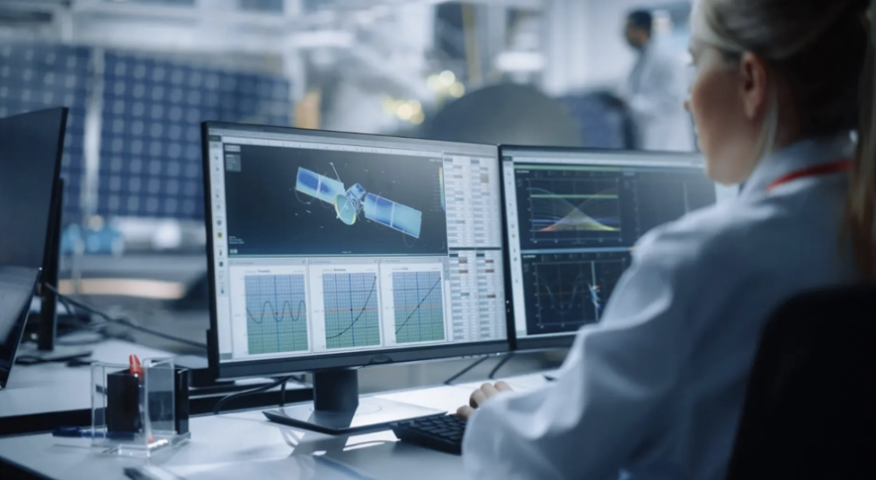
IT Services for Astrophysics
To study and understand space you need passion, intelligence and good computers.
The data to be analyzed in our sector is growing at an impressive rate and requires ever faster machines and ever larger DBs that use fast and reliable networks. HPC computing, use of GPUs, AI and containerization techniques are now staples in the scientific computing landscape and require continuous training due to their rapid evolution.
IAPS is equipped with a structure, the Institute IT Services, which defines, manages and coordinates the common IT services (CED and computing centres, storage, software, network and IT security) and collaborates with the collegues in the choice and management of the most appropriate software and hardware systems for the various projects in which the Institute is involved.
The Institute's IT infrastructure and the most important projects in which it is involved will be illustrated in the Info Point.
REFERENTE: Giuseppe Di Persio (giuseppe.dipersio@inaf.it)
Laboratories
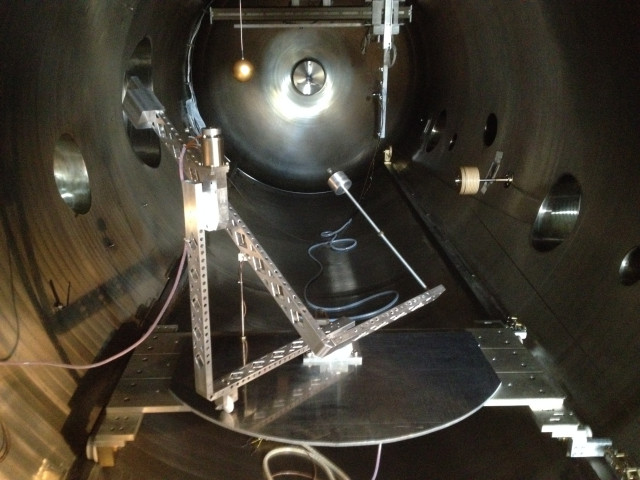
SWIPS Plasma Chamber Facility
INAF-IAPS Plasma Chamber Facility is designed to produce a large volume of space plasma, whose characteristic parameters (density, electron temperature, and ion energies) span the typical ranges encountered in the Earth's ionosphere and interplanetary space.
The main experimental activities carried out at the facility comprise:
- design and development of plasma instrumentation, and related testing and calibration activities;
- compatibility testing for materials immersed in space plasmas;
- technological solutions for space applications.
Collaborative partnerships with academia are offered to develop multiple activities (plasma simulations; instrument characterization and calibration) aimed at the writing of BSc, MSc, and PhD theses with a focus on experimental applications for laboratories and space missions.
CONTACT: Piero Diego (piero.diego@inaf.it)
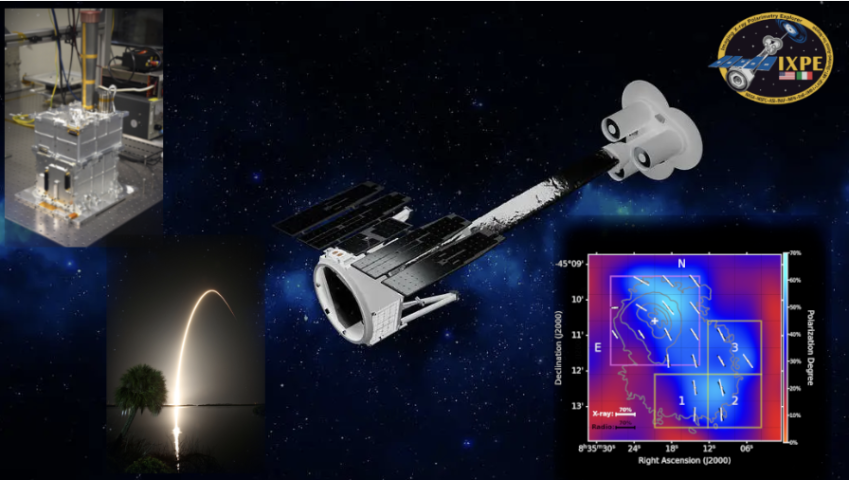
Development of X-ray polarimetry instrumentation and the Imaging X-ray Polarimetry Explorer (IXPE)
The American Astronomical Society recently awarded the Bruno Rossi prize to the NASA/ASI mission IXPE. It was launched on December 9, 2021, and has introduced X-ray polarimetry as a new approach in high-energy astrophysics. This achievement represents the culmination of 30 years of research conducted by the IAPS team, resulting in the development of an Italian detector, which is the heart of a NASA mission.
In our laboratories, we will showcase the location where these efforts led to the creation of the IXPE instrument, showing their first prototypes up to the final design, which is now on board the spacecraft. Currently, the team is also engaged in the development of a new generation of X-ray polarimeters for future missions based on new/different techniques.
CONTACT: Alessandro Di Marco (alessandro.dimarco@inaf.it) and Fabio La Monaca (fabio.lamonaca@inaf.it)
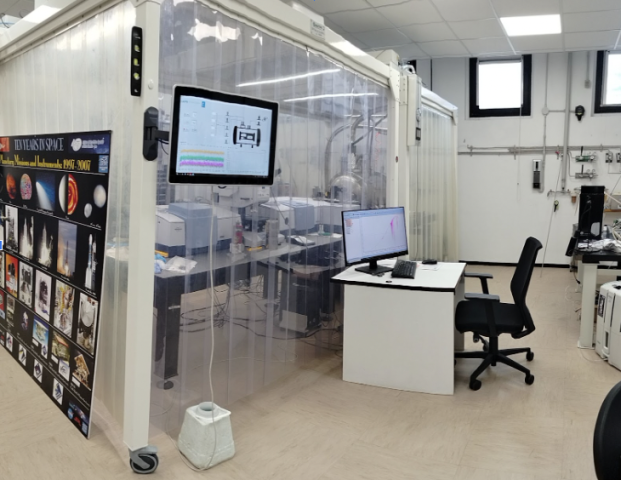
PLAB Infrared spectroscopy laboratory
The main activity of Plab is to measure the optical properties of gases typical of planetary atmospheres at high/low pressures and high/low temperatures. For the first time, we have recreated in the laboratory the atmosphere of Venus, which is composed mainly of carbon dioxide at a pressure of about 90 bars and a temperature of 500°C.
The team is currently involved in the study of the giant planet Jupiter, which is characterised by hydrogen and traces of He and CH4. In addition to this activity, the team is involved in the calibration and qualification testing of subsystems of space instruments. In particular, last year, tests were carried out of the MAJIS spectrometer on board of the JUICE space mission, launched in April 2023.
CONTACT: Stefania Stefani (stefania.stefani@inaf.it )

Control systems for space instrumentation
INAF is a reference science institution in Europe for the production of control systems for astronomical instrumentation. Over time, IAPS has acquired important expertise and specialization in the production of control systems for space instrumentation: they are particular systems, capable of managing the instruments on board space missions in total autonomy, carrying out the programmed measurements and, above all, reacting in real time to all the problems and stresses deriving from what happens on board during the periods in which the spacecraft is not in contact with the earth.
The visit will take place in the control room of one of the IAPS clean rooms, where a copy of the control systems of the VIS instrument on board the EUCLID mission is located. It will be possible to see how an instrument control console works, and how the telemetry and telecommands remote control system is structured between the ground segment and the satellite.
CONTACT: Maria Farina (maria.farina@inaf.it)

Cryogenic laboratory for Astrophysics X: TES superconductive detectors and the ATHENA mission
In the cryogenic laboratory for X-ray Astrophysics, we develop cutting-edge technologies for observing the X-ray sky from space. Our final goal is the study of the hottest components and the most energetic phenomena of the Universe, which requires high energy-resolution and low background detectors. These are based on sensitive superconducting thermometers called TES (Transition Edge Sensor), which work at temperatures close to the absolute zero point (T=50 mK, about -273 °C). To reach this temperature, the laboratory exploits two complex refrigerator systems: a dilution cryostat and an adiabatic demagnetization refrigerator.
At present, our work is mainly focused on the development of a TES detector for the ESA ATHENA mission, a large X-ray observatory to be launched in 2037.
CONTACT: Matteo D'Andrea (matteo.dandrea@inaf.it)

Detectors and methods for new High Energy Astrophysics experiments from space
The X-SENSE team (X-ray Sensors and Electronics for Novel Space-borne Experiments) is involved in the development of scientific methods and innovative space instrumentation for the observation of the most violent and extreme objects in the Universe, such as black holes, neutron stars and GRBs.
During the visit, you will take a closer look at instruments for the detection of X- and gamma-rays from space, following their development from the definition of the scientific question, to the design and prototyping phases, until the integration, qualification and testing of an integrated satellite. The X-SENSE team is made up of research and technologic personnel from various scientific backgrounds, including physics, mathematics, space, mechanical and electronic engineering.
CONTACT: Francesco Ceraudo (francesco.ceraudo@inaf.it)
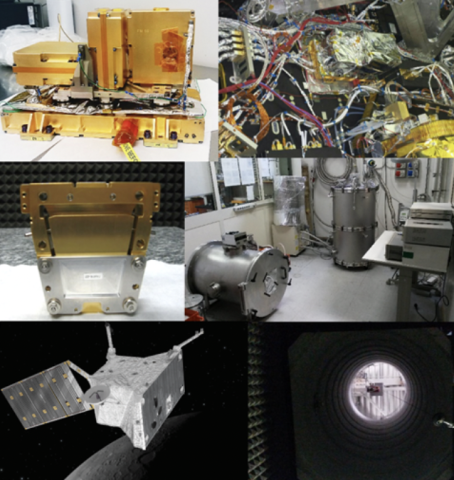
BepiColombo, Einstein and the Experimental Gravitation Group
The Laboratory of Experimental Gravitation (LGS) conducts studies on the gravitational field through experiments on Earth and in space. LGS has developed knowledge, techniques, and instrumentation for the development of accelerometers with high sensitivity, used for measuring gravitational fields and disturbances on satellites. The Italian Spring Accelerometer (ISA), part of the BepiColombo mission to Mercury, is a high-sensitivity accelerometer measuring non-gravitational disturbances.
The LGS group manages ISA and is involved in in-flight operations and data analysis. In the laboratories the ISA's model, the developed sensors and instruments for their characterisation will be shown. Other projects include GAIN (Intelligent Aerial Gravimeter), a gravimeter for Unmanned Aerial Vehicle based on machine learning techniques, and AGES (Accelerometry for Galileo Enhancement and Science), an accelometer to be used potentially on-board the Galileo navigation satellites.
CONTACT: Marco Lucente (marco.lucente@inaf.it)

High energy astrophysics in accretion systems: from radio to gamma rays
The INTEGRAL group at IAPS has a long sought experience in High Energy Astrophysics and it has been involved in the design, realization, calibration, management and science exploitation of instruments on board of astronomical satellites and stratospheric balloons. Recently, we are also acquiring expertise in Radio Astronomy.
Our group is deeply involved in the investigation of Galactic and Extragalactic accreting sources, including multi-frequency follow-up of the new transients, such as gravitational waves, neutrinos and fast radio bursts.
CONTACT: Gabriele Bruni (gabriele.bruni@inaf.it)
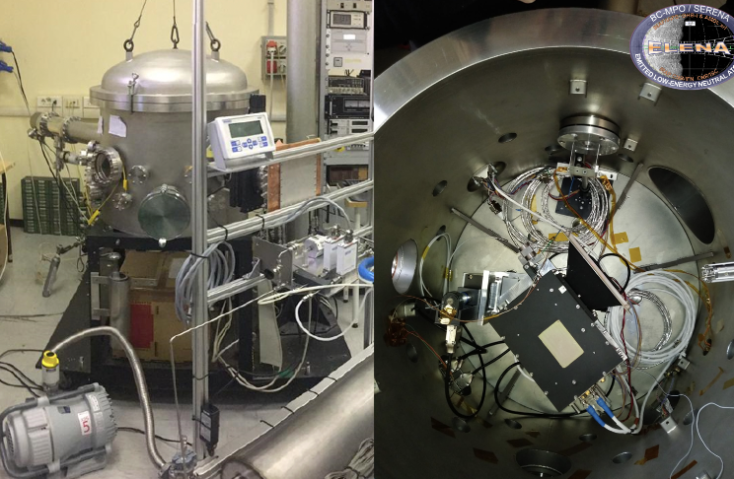
Development and Testing of Detectors for Planetary Space Weather
Ion-ENA beam laboratory is a facility for development and testing of space instrumentation; the main scientific applications are in the frame of the planetary space weather and the interaction between the solar wind and the surface/environment of the bodies in our solar system. Inside two different vacuum chambers, the detectors can be exposed to fluxes of ionised or neutral particles with energies between 0 and 5 keV (but we want to extend the range to 30 keV). In this way we can study the detectors properties and improve their performances.
Among the most recent and important results, we mention the ELENA neutral sensor on board of BepiColombo satellite. The detector was designed and tested completely in IAPS.
The activities require and develop skills in: data acquisition and analysis; design and development of mechanical elements and hardware; ions sources; development, testing and calibration of detectors; electronics for power supply, read-out and data acquisition; vacuum systems; software development for space missions; development of instruments and electronics for space flights.
REFERENTI: Luca Colasanti (luca.colasanti@inaf.it) e Martina Moroni (martina.moroni@inaf.it)
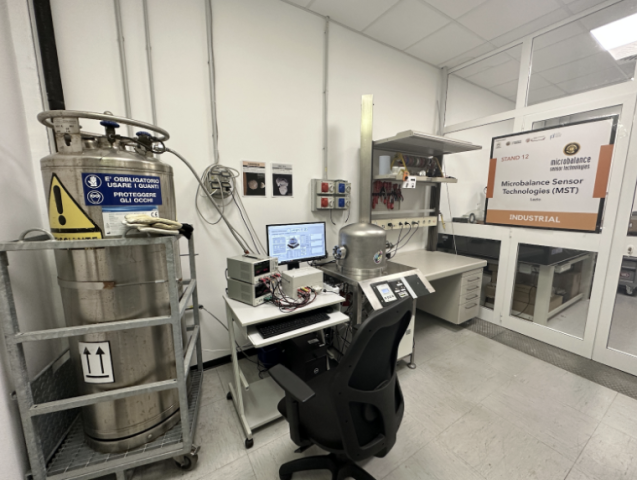
SPARK LAB (SPAce Rock Key-analysis Laboratory)
In this laboratory, microbalance sensor for detection of planetary dust and volatile compounds of astrobiological interest (water, organics) in the space, and of space contaminants are developed and qualified. The following tests are performed:-
- Functionality (monitoring fundamental measurements)
- Thermal tests, to verify the instrument capability to work at different temperatures
- Performance,to verify the ability of the instrument to monitor a deposition process
- Thermogravimetric analysis, which make it possible to detect material desorbing from dust during a heating processes
Moreover, analyses on meteorite samples similar in composition to planetary bodies are performed, in particular thermal processing, sieving, imaging, spectrometric analysis and laser bombardment.
REFERENTE: Fabrizio Dirri (fabrizio.dirri@inaf.it)
Other any info

